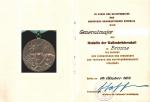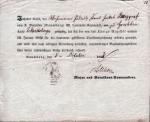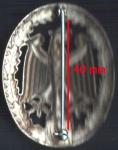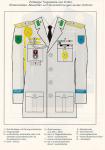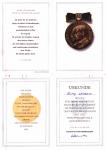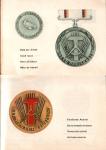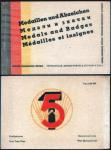-
Posts
1,628 -
Joined
-
Last visited
-
Days Won
2
Content Type
Profiles
Forums
Blogs
Gallery
Events
Store
Everything posted by speedytop
-
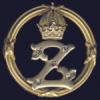
DDR Waffenbr?derschaft Medal
speedytop replied to speedytop's topic in Germany: Post 1945: Bundesrepublik & DDR
This document is for the same man in 1966. The award was instituted 17. February 1966. The document here is defined as "Ausweis f?r die Verleihung der Medaille an ausl?ndische B?rger" (Identity card for foreigners) Source: Feder/Feder, Auszeichnungen der Nationalen Volksarmee der Deutschen Demokratischen Republik, 1994 But it is not a document for a foreign soldier, it is for a German Generalmajor, at that time commander of a Panzerdivision. To show the small dimensions, a picture of the medal is added in the same scale. -
Hi, in conjunction with the DDR/Mongolian thread about the "Medaille der Waffenbr?derschaft" I want to show more documents. The first document is for a (German) Generalleutnant 1982, at that time he was the commander of a military acadamy.
-

DDR Ernst Schneller Medal cert
speedytop replied to Bayoswede's topic in Germany: Post 1945: Bundesrepublik & DDR
Hi Christer, all the documents for the Ernst-Schneller-Medaille in my collection have a personal signature, Teller or other legitimated persons. Regards Uwe -
Hi, that is in German a: Libellenquadrant, verwendet bei Gesch?tzen zur Feststellung, Festlegung des H?henwinkels (Erh?hung) beim indirekten Richten, geh?rt eigentlich zu jedem Gesch?tz in die Ausstattung. Gunner?s Quadrant, part used to align howitzers and artillery barrels, for the elevation adjustment. Regards Uwe
-
Gordon, looking for the name of the General of the 5. Panzerdivision, you have to exclude the divisional commanders. Brigadegeneral was his last rank, and that is for the second in command, "stellvertretender Divisionskommandeur". And I don't think, that it is BrigGen v. Heimendahl. I know him, and he is a man with a real sense of tradition, and I think, that he would not give away his uniform . Regards Uwe
-
Hi, there is something, that I cannot read, and something, that I cannot understand. K?niglich-Hannnoversches 4. Infanterieregiment Inhaber dieses, der Infanterist J?rgen Heinrich M?ller I. geboren zu Neetze Amts Scharnebeck hat in obigem Regiment die auf der folgenden Seite bemerkte Zeit treu und redlich gedient, ist jedoch nunmehro nach abgelaufener Dienstzeit aus dem selben entlassen, und, nachdem er durch seine Name(?) Unterschrift umstehend seine Abrechnung als richtig anerkannt hat, mit diesem Abschiede versehen worden Stabs-Quartier Stade, den 21. October 1855 R?st, Oberstleutnant Regimentskommandeur (Oberstlt. Regts-Commdr.) Signalement des Verabschiedeten: Alter: 28 (23?) Jahre Gr??e: 5 Fu? 9 Zoll Haare: blond Augen: grau (gr?n?) Handwerk: -0- It is the end of his time as a soldier. Is there another page with his listed time of service? Zeugni? Das Betragen des nach beendeter Dienstzeit verabschiedeten und unter dem 31. October 1855 mit einem guten Abschiede versehenen Infanteristen J?rgen Heinrich M?ller I. ist w?hrend seiner activen Dienstzeit und, eingezogenen Erkundigungen zufolge, auch w?hrend seiner zeitweiligen Beurlaubungen von der Art gewesen, da? er ohne Nachtheil des Dien- stes wieder als Stellvertreter angenommen werden kann. Der Infanterist M?ller I. geh?rt nach Ansicht des (unreadable, need a better picture, it could be important) Stade, den 31, October 1855 (name) (unreadable) (that could be the paymaster) Best?tigt. R?st Oberstleutnant Regimentskommandeur Is on the page in post 6 another signature from M?ller, could be XXX? The left signature is from Oberstleutnant Steinwedell as Bataillonskommandeur(?) Regards Uwe
-
Hi, you are interested in some more information? The shields are normally for Brigades and higher, several years ago 3 Tank Regiments had such a shield for some years. The silver (black/white) colour around the shields is not only for the Divisional Headquarter, it is for the Divisional Troops (Divisionstruppen) too, e.g. Artillerie, Logistic In this case here the colour yellow is for the 15. Panzerbrigade (post 8). Please look here: http://de.wikipedia.org/wiki/5._Panzerdivi...28Bundeswehr%29 I see two different colours on the tab and at the strap? The tab is more red (korallenrot) for Heeresflugabwehrtruppe (Army anti aircraft), the strap is more orange, and that is for Feldj?ger (MP). Both are Divisional Troops. Please look here: http://www.autoflaggen.de/bw/bw_allg_wafarben.htm "Waffengattung" is the wrong term, there are "Truppengattungen" (branches) with "Waffenfarben". It was an enlisted man, the rank is not correct to identify, but I think it was a Gefreiter with one stripe (see post 2) and look here: http://de.wikipedia.org/wiki/Dienstgrade_in_der_Bundeswehr ore here: http://en.wikipedia.org/wiki/German_Armed_...d_rank_insignia Kevin, please have a look into the left inside pocket, pull out the inside, normally you can find there some more information in German jackets. Regards Uwe
-
Hi, the Freie Deutsche Jugend FDJ in the DDR/GDR was a mass organization like the Hitlerjugend HJ in the TR. Existence from 1946 to 1990. Children aged 6 -14 years were organized in the "Pionierorganisation Ernst Th?lmann", Junge Pioniere JP (!981 1,6 million members). The youth aged 14 to max. 25 years was organized in the FDJ (1981 2,3 million members). There were hundreds of decorations, medals and badges in both organizations. Regards Uwe
-
Hi, it is a civil FDJ decoration. It was awarded only to the best FDJ men. Roosevelt is good , but I think, it is Genosse Wilhelm Pieck, the president of the DDR. In Bartel, DDR-Spezialkatalog 1949-1990, edited 1998, you can find it at No. 2482. I think, that they often lost the medal, because the hanger for the medal ist badly soldered. It is not a common decoration like Kollektiv or Aktivist of the socialist labour. There are two different medals, one made of aluminium (less value), the other of Bronze. You can wear the brooch without the medal, it is separable. Regards Uwe
-
Hi Alex, it is the peace medal (Friedensmedaille) of the FDJ 1950. On your medal the blue enamelled bar is missing. See the award document. The inscription on the medal is "peace kontingent of the German youth (01.07.-01.11.1950)" Regards Uwe
-
Hi, you can find these and other badges in the 60s, 70s and 80s in the Sovietunion in large quantities for some cent. Mostly you can find the original price on the reverse, e.g. 10K, 15K or 25K; 10, 15 or 25 kopeck. Kevin, here are some more, but not all, and two of them with a different design. The Odessa badge is with a makers mark and the price = 10K
-

DDR Unknown (to me) NVA badges
speedytop replied to Tony's topic in Germany: Post 1945: Bundesrepublik & DDR
Hi Tony, these are all DDR (GDR): Leistungsabzeichen (the first three) f?r vorbildliche Diensthundef?hrer 1966-1989 (exemplary dog handlers/leaders), police, all three grades Klassifizierungsabzeichen f?r Waffengattungen NVA 1986-1990 - Allgeneines Klassifizierungsabzeichen (general badge), grade III, the lowest grade - Klassifizierungsabzeichen f?r R?ckw?rtige Dienste (logistics), grade III - Klassifizierungsabzeichen f?r den Kraftfahrzeugdienst (drivers), grade II There are many more such badges, different types in different times, magnetically and unmagnetic, very cheap and very expensive! The badges shown here were cheap examples. Regards Uwe -
Hi, it is the picture of Heinrich Reu?, because his wife wrote: "Friesenheim, 26.3.1915. Lieber Heinrich! ?bersende dir dein liebes Bild, m?ge dich es so gesund und munter antreffen, wie es uns verl??t. In der Hoffnung auf ein baldiges Wiedersehen gr??t dich herzlich deine dich innig liebende Frau und Kinder" Send you your dear picture, ... ! Regards Uwe
-
Hi Bob, it is from FRIESENHEIM, a part of LUDWIGSHAFEN: http://en.wikipedia.org/wiki/Ludwigshafen_am_Rhein http://de.wikipedia.org/wiki/Ludwigshafen-Friesenheim At that time (1915) Ludwigshafen is a part of Bavaria! The "Bayerische Provinz Pfalz" (1816-1947): http://de.wikipedia.org/wiki/Bild:Pfalz1900.jpg And Vize-Feldwebel Heirich Reu? is a member of the 2. bayerischen Reserve-Fu?artillerie-Regiments (see PC: 2. bay. Res. Fu?. Art. Regt.) (bavarian) 1. Bataillon, 4. Batterie 33. Reserve-Division Regards Uwe
-

DDR DDR / East German Reference Books Data Base
speedytop replied to Paul R's topic in Germany: Post 1945: Bundesrepublik & DDR
-

DDR DDR / East German Reference Books Data Base
speedytop replied to Paul R's topic in Germany: Post 1945: Bundesrepublik & DDR
Last but not least, one of my favorites. Medaillen und Abzeichen Medals and Badges Amt f?r Information der Deutschen Demokratischen Republik Information Department of the German Democratic Republic Stand vom 1. Juli 1951 Position on July 1. 1951 Front and Back of the book: -

DDR In the Stasi...
speedytop replied to Christophe's topic in Germany: Post 1945: Bundesrepublik & DDR
Hi, Gordon: "It is different than other award boxes I have seen which were thicker and grey in colour." You must differentiate between the box for the present for 25 years of service (grey and thick, 67 - 70mm) and the box for Kollektiv awards (red and thin, 22 - 26mm). The grey box is allways the same. for NVA, for MfS, for civilians, and for generals. For a Kollektiv I know 2 versions, the one shown here in the thread (may be the older version, 1973), and another one, where the medal is fixed on a small pillow (variations), but there is no red cover around the decoration. The award in my collection is from 1983, Verdienstmedaille der Grenztruppen. Regards Uwe



